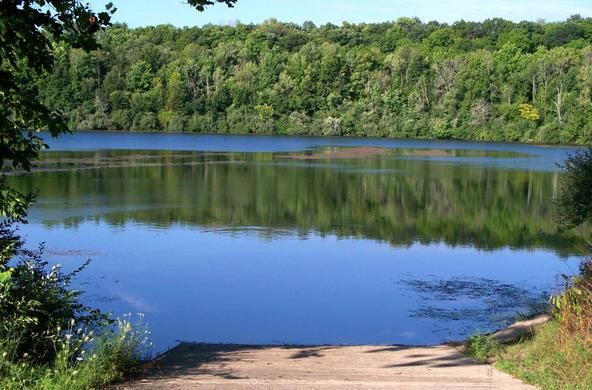In New York’s Adirondack State Park, over 3,000 lakes and ponds dot the landscape. In many ways, the water within their shorelines is tied to the forests that abut them. Are the forests young or old? Are they growing on sandy soil or bedrock? And, perhaps most importantly, can they filter out pollutants?
The Adirondack Park covers more than six million acres, making it the largest state or federal park in the contiguous United States. It has the misfortune, however, of being downwind from a number of major Midwestern power facilities. As a result of geography, these coal-burning plants send the park a steady supply of nitrogen pollution.
It has been well documented that excess nitrate can cause freshwater acidification. Forest Ecologist Dr. Charles Canham and Aquatic Ecologist Dr. Michael Pace are interested in revealing if nitrogen, as a nutrient, could also pose a threat to Adirondack Park lakes. These lakes are among the last low-nutrient crystal-clear fresh waters in the U.S.; nitrogen enrichment could condemn them to a future of algal growth and reduced water clarity.
Forests can serve as important filters for nitrogen, minimizing the amount that reaches nearby lakes. Canham and Pace hypothesize that atmospheric nitrogen loads are exceeding the forest’s ability to filter watershed outputs, leading to nitrogen-loading in adjacent water bodies. Exploring the link between lake chemistry and wetland configuration is a daunting task; researchers are faced with a huge research site and hundreds of remote lakes that are difficult to access.
Armed with the Adirondack Park Agency’s watershed data, Canham and colleagues set out to gather water samples from 212 representative lakes. Collecting these samples required time, persistence, and ingenuity. The latter came in the form of Ed McNeil, an engineer and committed environmentalist who built and retrofitted a 28-foot float plane for lake sampling. McNeil’s support for the project— donating the use of his plane, serving as pilot, and providing field sampling funds— was critical in getting it off the ground.
Canham and McNeil spent the summer of 2006 gathering samples. These data are being used to fuel computer models that will help analyze nitrogen inputs, wetland buffering capacity, and the fate of the Adirondack Park lakes. Preliminary tests have revealed that many of the sampled lakes are being stressed by nitrogen inputs, especially those on the park’s western side.
The duo will take to the air again this summer, expanding the study to include another 200 lakes. This information will strengthen the models being used to help reveal what is happening in the region.






